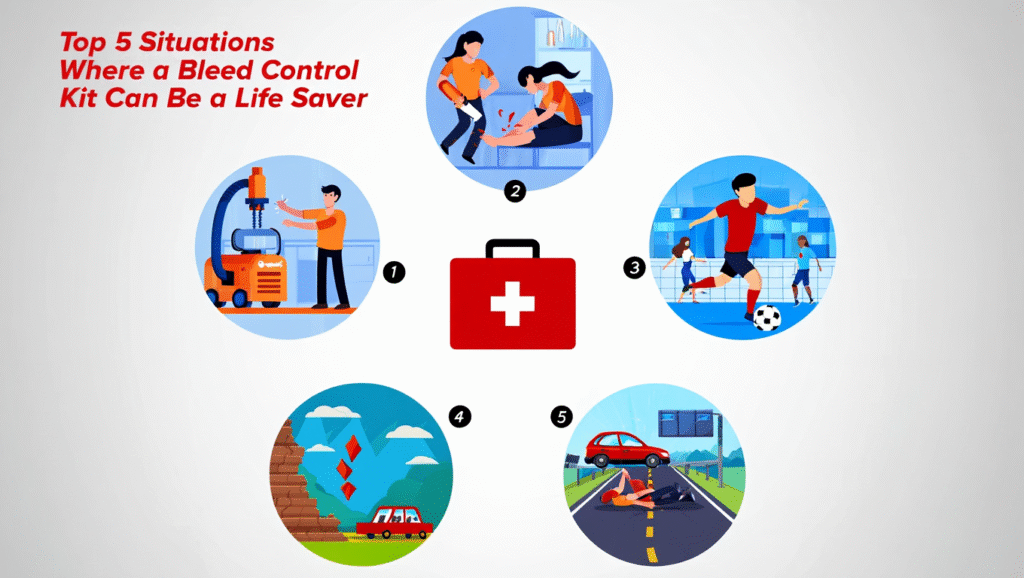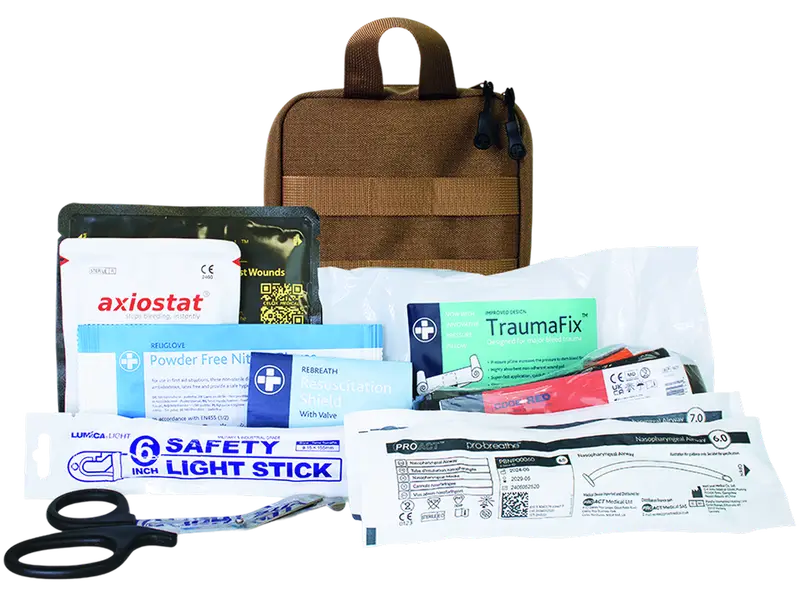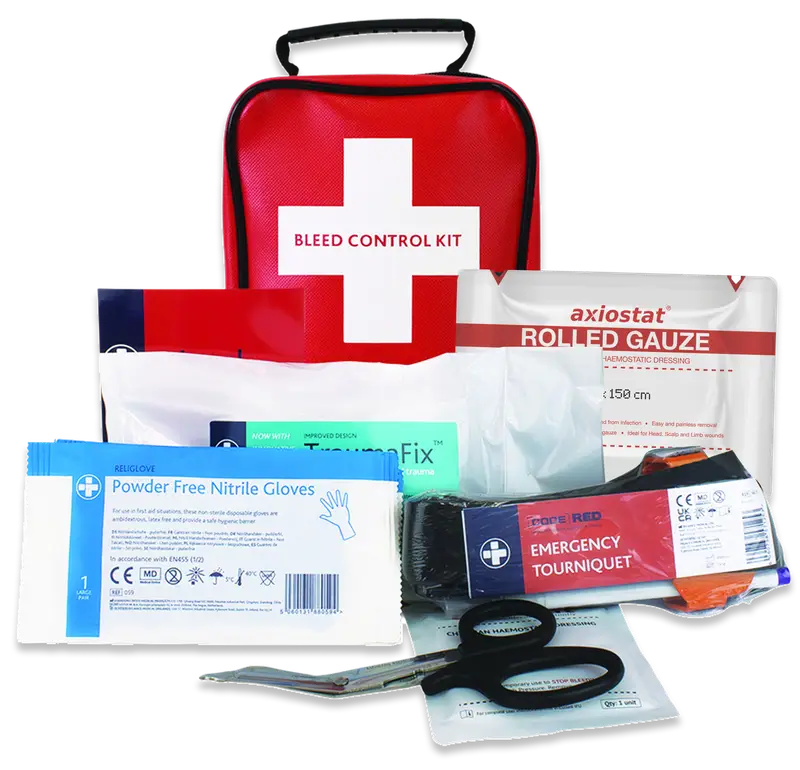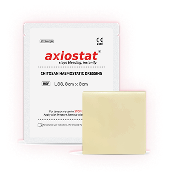
Before exploring those five situations, here’s what you’ll typically find inside:
Axiostat® Vascular Patch
Axiostat® Vascular Patch
V35
V55
3.5cm x 3.5cm
5cm x 5cm
Box of 15
Box of 10

Axiostat® Z-Fold Gauze – 7.6cm x 300cm
Foxseal Occlusive Chest Seal (Contains 2 Chest Seals)
TraumaFix Dressing Sterile Including Pressure Pad 10cm x 18cm
CODE RED Emergency Tourniquet
Rebreath Mouth to Mouth Resuscitation Device with Valve
Religlove Nitrile Examination Gloves Large (Pair)
6″ Military Grade High Intensity Cyalume Lightstick White
PRO-Breathe Nasopharyngeal Airway, Size 6
PRO-Breathe Nasopharyngeal Airway, Size 7
Universal shears large 7.6″
1
1
1
1
1
1
1
1
1
1

Axiostat® Rolled Gauze – 7.6cm x 150cm
Religlove – Nitrile Examination Gloves – Large – Pair
Universal shears large 7.6″
TraumaFix Dressing Sterile Including Pressure Pad
CODE RED Emergency Tourniquet
Foxseal Occlusive Chest Seal
Bleed Control Guidance Leaflet
1
2
1
1
1
1
1
Axiostat® Rolled Gauze
Axiostat® Z-Fold
Axiostat® Z-Fold
Axiostat® Patch
Axiostat® Patch
Axiostat® 4-Ply Gauze
Axiostat® Single Ply Gauze
Axiostat® Rolled Gauze
6510-72-057-0462
6510-72-057-0460
6510-72-057-2313
6510-72-057-0464
–
6510-72-057-2350
6510-72-057-0461
–
L150
MIL300
MIL150
L88 / MIL88
M85
L2020
L1010 / MIL1010
L100
7.6cm x 150cm
7.6cm x 300cm
7.6cm x 150cm
8cm x 8cm
8cm x 5cm
20cm x 20cm
10cm x 10cm
7.6cm x 100cm
Individual
Individual
Individual
Box of 10
Box of 10
Box of 10
Box of 10
Individual


For Femoral and Radial Access Closures


For Femoral and Radial Access Closures